Author: xpara, Four Pillars Researcher; Translation: Jinse Finance xiaozou
1, Proof System and Optimistic Proof
Let's return to the basics of blockchain. Blockchain is essentially a state machine whose state changes with transactions, and the changed shared state is used by all participants. It is crucial to ensure that all participants reach consensus on the shared state. In order to better reach consensus and eliminate the need for trust in one party, blockchain focuses on decentralized features. However, this decentralization may limit scalability and make it difficult to accommodate more transactions. These problems constitute the blockchain's trilemma.
As one of the earliest smart contract blockchains, Ethereum led the creation of rollup. In the rollup model, execution is separated from Ethereum, but there is still a system to check validity and punish malicious activities. There are two ways to build this system. The first is an optimistic approach, where the next state is pre-confirmed and finalized after a buffer challenge period. The second approach is to leverage zk validity proofs, where state updates can be verified via an on-chain zk proof in a low-cost validation process. While sidechains are another option, I excluded them due to their low reliance on Ethereum for settlement. Optimistic proofs (aka fraud proofs or error proofs) are the primary viable method for settling rollup state updates due to their ease of implementation.
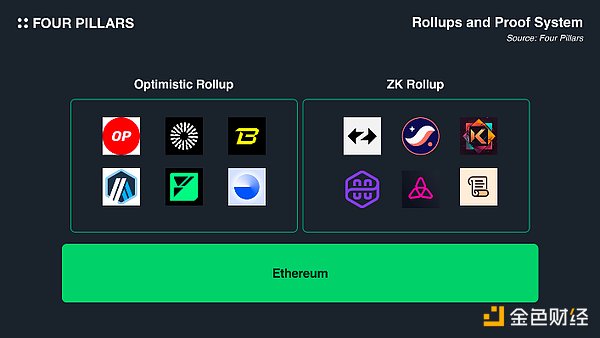
1.1The Status of Proof Systems:ZK andOP
It was once thought that zk proof systems would soon dominate and optimistic proof systems would lose their advantage. zk proof systems are often expected to provide lower costs and faster finality for rollups, and they have made significant progress in proof generation, with various experiments conducted on general-purpose zkVM builds based on MIPS, RISC-V, and Wasm. These projects include ZKM, RiscZero, Succint Labs, and Fluent. Despite the obvious benefits of zk rollups, the challenges of developing cost-effective and secure versions are enormous. There are also challenges with updating virtual machines such as EVM, as it is difficult to incorporate new features without breaking any features.
Due to these challenges, the most common optimistic proof system is currently in the rollup ecosystem, which accounts for the majority of TVL (about 75% of L2's total TVL). It is uncertain whether this dominance will continue in the future. However, there have been numerous initiatives aimed at optimizing proof systems and making great progress.
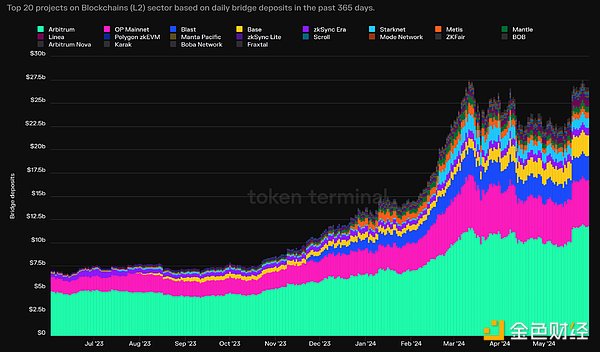
1.2 What is the future of optimistic proof systems?
There is a lot of active research and development going on with the goal of improving optimistic proof systems, focusing on three main areas:
· Reducing costs
· Decentralizing the ordering, challenges, and finalization process
· Reducing soft finality and hard finality
All three areas have seen significant efforts, such as the recent Dencun upgrade, which includes EIP-4844, improved data compression, and the development of interactive proof systems.
Before diving into the latest developments, it is worthwhile to first thoroughly understand the established concepts and the current state of the art. First, we should look at the evolution of the field, and then dive into the current state of optimistic proof projects.
2、The History of Optimistic Proof System
Optimistic proof system is not a one-shot project. There are many researchers and developers working hard to build a robotic proof system to ensure that it can run seamlessly in practice, and the system has now secured $18 billion in funds. Let's review the milestones.
2.1The Past—Tracing History
Optimistic Rollup was originally proposed by Ethereum researcher John Adler in 2019 as a Layer 2 scaling solution for Ethereum. The core idea of Optimistic Rollup is to move computation and data storage from the Ethereum mainnet to an independent L2 chain while still inheriting Ethereum's security guarantees. The main motivation for developing Optimistic Rollup was to take into account the congestion and high transaction fees on the Ethereum mainnet. With the growing popularity of DeFi protocols and NFTs, Ethereum faces scalability issues that hinder user experience and economic efficiency.
Optimistic Rollup is mainly experimented and developed by two teams, Arbitrum and Optimism. These rollups are designed to provide scalability for Ethereum by processing off-chain transactions and publishing compressed transaction data and output roots on the Ethereum mainnet. Because they reduce costs for users and dapps, the Ethereum community has quickly adopted these rollups.
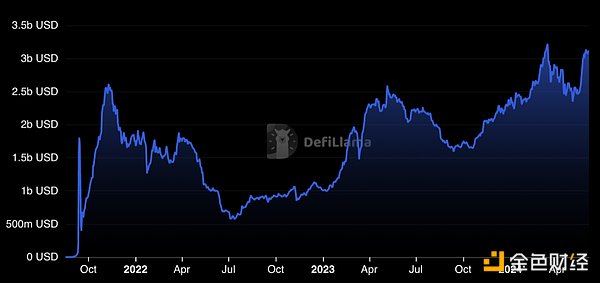
The key feature of Optimistic Rollup is that they adopt an "optimistic" approach - after a simple validity check on the transaction, they assume that all transactions are valid by default, and they rely on a fraud proof mechanism where challengers can challenge the validity of the transaction within a set period of time (usually 7 days). If a fraudulent transaction is detected, a fraud proof is executed on the chain to reprocess the transaction in the correct way. This optimistic approach has allowed optimistic rollup to achieve significant scalability improvements on the Ethereum mainnet.
There have been many challenges in the past. Initially, projects like Optimism used their own modified EVM (called OVM), which limited its compatibility with the EVM. These projects would go on to take a centralized approach to solving rollback and challenge mechanisms. This approach comes with a security tradeoff, as transactions are not finalized immediately and can be rolled back if a limited number of participants detect fraud during the challenge window.
2.2Current Status -Progress, but Challenges
Recent developments in the Optimistic Proof System have significantly improved the efficiency and scalability of Ethereum L2 solutions such as Arbitrum and Optimism. In addition to Ethereum's Dencun upgrade, other optimizations to Optimistic Rollup have also contributed to improved efficiency. For example, Arbitrum has been working on refining its error proof system to ensure data integrity and security.
Optimism has also made substantial progress through its Superchain strategy, which aims to create a coordinated ecosystem of multiple L2s using the OP Stack. Superchain leverages custom and alt DA solutions, cross-chain messaging, and shared ordering to facilitate seamless interoperability and scalability optimizations.
Recent enhancements to the Optimistic Rollup ecosystem have seen a shift from non-interactive fraud proofs to interactive fraud proofs. Interactive proofs involve a back-and-forth conversation to efficiently identify and correct erroneous transactions. This change is intended to reduce the computational cost and complexity of on-chain verification.
3Current Landscape
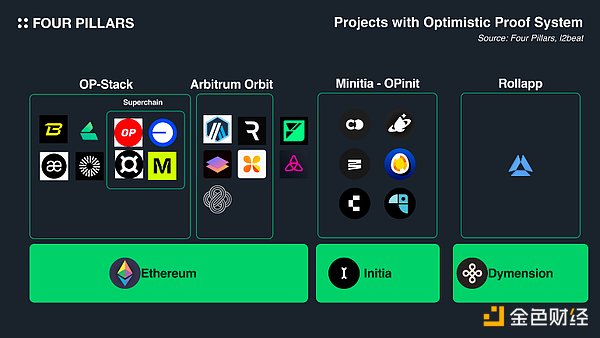
Let's take a look at the current state of rollup, focusing on projects operating under the optimistic proof system and their development.
Currently, Arbitrum and Optimism are mainly committed to improving the optimistic proof system. Other projects, such as Initia, Dymension, and Rollkit, are developing their own rollup ecosystem frameworks.
Arbitrum and Optimism are working to improve the technology of fraud proofs, while other projects are also implementing interesting approaches. Let's take a brief overview of their current activities and progress.
3.1 Arbitrum—Multi-Round Proofs andBoLD
3.1.1 Multi-Round Proof
Arbitrum’s proof system uses a “multi-round fraud proof” approach to verify transactions. This process occurs primarily off-chain, with the final state recorded on Ethereum’s blockchain for increased transparency.
The core feature of the system is the “assertion tree.” Validators who post bonds using ETH make statements (or “assertions”) about the state of Arbitrum. These assertions form a chain, with each assertion building on the previous one. However, when there are conflicting assertions, the assertion tree splits into branches, indicating possible fraud.
Resolving these disputes involves an interactive proof technique called “dissection.” The validators involved in the dispute systematically reduce their disagreement until only a single operation remains. That operation is then run on Ethereum L1 to determine its validity.
Here are the steps:
· Two validators disagree about the state of Arbitrum.
· They gradually reduce their dispute down to just one computational step.
· This step is then run on Ethereum L1 to verify which validator is correct.
Arbitrum’s approach is notable for its efficiency. By isolating and checking the disputed computation, it avoids the more expensive process of rerunning the entire transaction on Ethereum, as Optimism’s single-round fraud proofs do, since single-round fraud proofs require all computations to be performed on the L1 chain.
3.1.2 Arbitrum BoLD
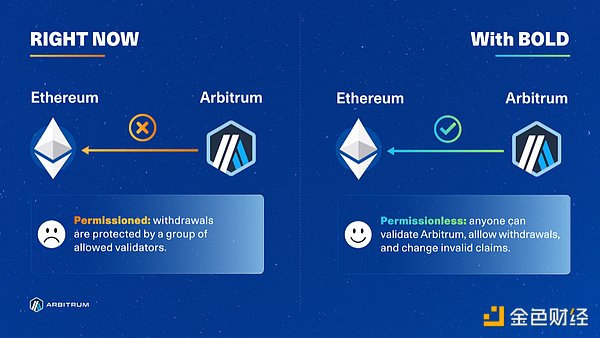
BoLD (Bounded Liquidity Delay) is a new dispute resolution protocol tailored for Optimistic Roolups on the Arbitrum chain, designed to facilitate permissionless validation. This mechanism reduces the risk associated with latency attacks by ensuring that disputes are resolved within a predetermined time window.
BoLD has several key features that are an important part of its functionality. First, it introduces permissionless validation, allowing any honest party to validate and bond their funds to publish a correct L2 state assertion. This feature enables honest validators to challenge and win disputes against malicious actors. Second, BoLD guarantees that disputes will be resolved within a fixed time window, currently set to a challenge period (about 6.4 days) for Arbitrum One and Nova. Additionally, the maximum time to resolve a dispute includes up to two challenge periods plus a two-day grace period during which the Security Council may intervene. Finally, BoLD supports Arbitrum’s entry into the Stage 2 rollup phase, ensuring that anyone can validate this L2 state and submit fraud proofs to Ethereum, which enhances the decentralized nature and security of the platform.
Critically, BoLD promotes permissionless participation, encouraging any honest party to participate in the verification process. This inclusivity aims to foster greater resilience within the network by diversifying participation and reducing central points of failure. Currently, BoLD is in its alpha release phase and is deployed on a public test network. It has also undergone two audits.
3.2 Optimism—Fault ProofVM,Cannon
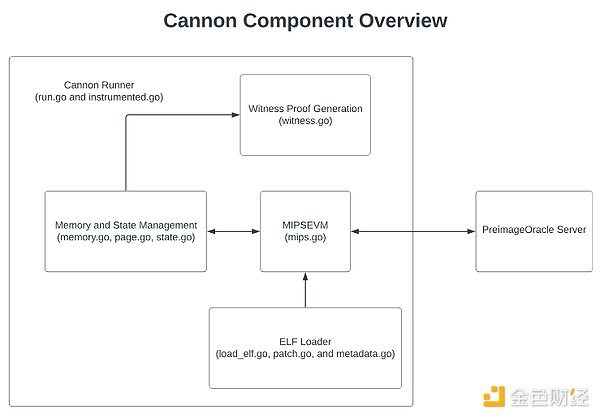
The fault proof system in OP-Stack is designed to challenge and mitigate malicious activities in the network. The upcoming fault proof virtual machine will be a key improvement. The system consists of three main parts: the fault proof program (FPP), the fault proof virtual machine (FPVM), and the dispute game protocol. The FPP checks the rollup state transition to verify the L2 output (L1 input) and sort out the disputes of the L1 output. This modular architecture allows multiple proof systems and unique dispute games to be independently developed and deployed, greatly enhancing the flexibility and security of the system.
FPVM is a minimal and composable unit in the architecture, and due to its separation from FPP, it can execute instruction cycles for proving transactions while being unaffected by Ethereum protocol updates. The dispute game protocol coordinates the challenge mechanism by equally splitting state transitions, reducing disputes to single instruction verification, allowing efficient proofs on L1 EVM. The system promotes a multi-proof future that includes various proof methods, such as ZK proofs and aggregate proof systems.
3.3 Initia—Enshrined OP-Stack,OPinit
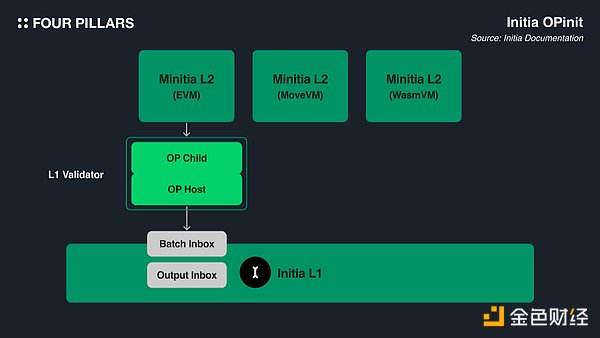
Initia is a Comsos L1 blockchain that is building a unified, intertwined rollup ecosystem. Initia is very similar to the rollup ecosystem in Ethereum, except that it is designed for rollups from the bottom up. Initia L1's validators run sorters for rollups, and optimistic proof-based settlement is embedded in the L1 blockchain. Let's see how these rollups work, which are built with OPinit Stack, which supports EVM, WasmVM, and MoveVM, with native interoperability through IBC.
OPinit Stack is a framework designed to launch Minitia L2 based on the Initia L1 blockchain. OPinit Stack is built specifically with CosmosSDK, which helps build virtual machine-agnostic Optimistic Rollups, very close to Optimism's Bedrock interface. By leveraging the Initia L1 governance model, it efficiently handles fraud proof disputes, ensuring reliable transaction verification and dispute resolution. Just like Bedrock's challenge system, undetermined outputs can be removed by a licensed challenger. In addition, through L1 proposals, output committers can be changed.
OPinit Stack consists of two main modules - OPHost and OPChild:
· The OPHost module is designed for L1 operations in the Initia ecosystem, leveraging Cosmos SDK capabilities. It includes various message types and RPC handler methods to facilitate core activities such as batch submission, bridge creation, output data proposals, and output deletion.
· The OPChild module focuses on L2 operations, providing mechanisms to support token transfers and fee pool management. It also includes specific message types and RPC handlers for executing messages, determining token storage, and initiating token withdrawals from L2 to L1, ensuring improved L2 functionality within the Initia architecture.
3.4 Taiko—Multi-round system
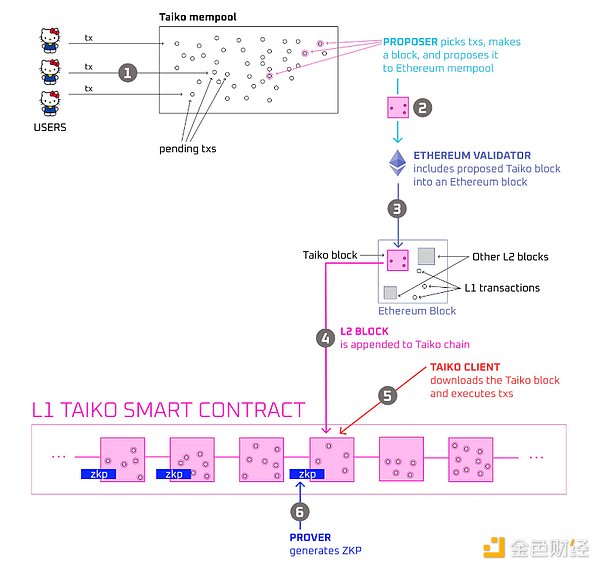
Taiko is a default optimistic rollup that uses a multi-proof system. The system combines the use of optimistic methods and zk proofs.
The process starts with Proposers, who build rollup blocks from L2 transactions and recommend them to the L1 Taiko contract on Ethereum. These proposed blocks are added to the L1 contract without any validity proof. Provers then have the opportunity to challenge the validity of the proposed block by providing a bond, which requires staking TAIKO tokens. If a block is not challenged within the challenge period, it is considered valid and finalized on L1, and the prover's bond is returned. In the event that a block is challenged, a zk proof is required to confirm the validity of the block. The correct prover, whether the original prover or the challenger, will receive a reward in addition to getting the bond back. At the same time, the bond of the wrong party will be forfeited and a portion will be burned.
Interestingly, Taiko estimates that about 1% of blocks require zk proofs, which helps reduce computational overhead while still providing validity guarantees. To enhance its resilience, Taiko supports multiple proof backends such as PLONK, Halo2, and SGX to prevent potential bugs or vulnerabilities. This approach allows dApps to set their own trust assumptions and security levels, demonstrating Taiko's contribution to blockchain scalability and security.
3.5Other—DymensionandRollkit
3.5.1 Dymension
Fraud proofs are an integral part of the Dymension ecosystem and are designed to ensure the integrity of blockchain state transitions. When a RollApp (Rollup in Dymension L1) sorter publishes a state root, RollApp full nodes monitor these transitions. If an invalid state transition is detected, these nodes generate a unique fraud proof transaction by collecting a list of all state transitions within the block up to the fraudulent state transition.
This collection transaction, including details such as block height, transaction index, blob shares, blob inclusion proof, and state witness, is then sent to Dymension for verification. Once submitted, Dymension full nodes will verify the data and recalculate the state transitions. If the calculated transition produces an interim state root (ISR) that is different from the published state, the fraud proof is validated, resulting in a rollback of the disputed state and a slashing of the responsible sorter.
The current dispute period on the Dymension mainnet is set to approximately 120,000 blocks. Since one block is currently produced every 6 seconds, the finalization time is approximately 8 days.
3.5.2 Rollkit
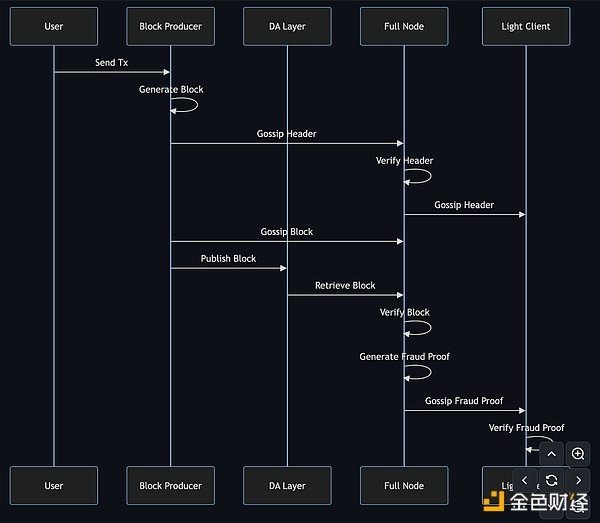
Rollkit's state fraud proofs help reduce trust issues in blockchain networks by identifying fraudulent transactions. They are used in situations where the state roots produced by the full node and the sorter do not match. The full node creates a proof that is shared across the entire network for verification. If a mismatch is confirmed, corrective action is required, enhancing security and decentralizing oversight.
4Future Development: Problems and Solutions
Many people once thought that optimistic rollup was inferior to zk rollup. As zk rollup is increasingly put into production, its advantages such as secure interoperability and faster finality are well known, and people are wondering whether optimistic proof systems will fall sharply. I don’t think so, because there have been a lot of positive progress in addressing the main problems in optimistic proof systems.
Now, let’s take a look at what these main problems are and what potential solutions are there?
· Operational centralization
· High operational costs
· Slow finality
4.1Decentralization—Permissionless verification
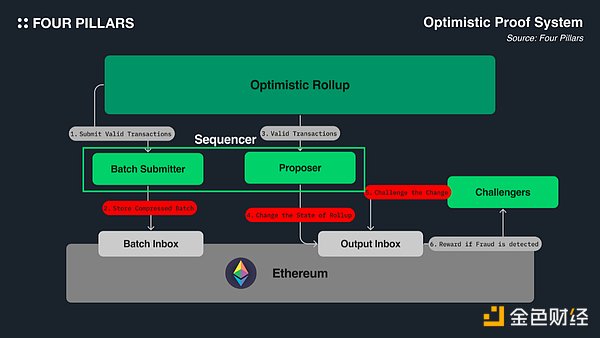
In the Optimistic Rollup project, the centralization of the sorter is a key issue because it involves having a centralized point of control and trust in a system that is intended to be decentralized. In Optimistic Rollup, the sorter is responsible for ordering transactions and aggregating them off-chain before submitting them to Ethereum. This central role gives the sorter considerable power and control, which can introduce some centralization risks.
Most rollups today use centralized sorters. In this case, a single entity or organization usually runs the sorter, which can lead to several potential problems. Most current rollups, including OP-Mainnet and Arbitrum, do not have fully decentralized systems. They rely on some central entity for submitting transaction packages and participating in the fraud challenge system. However, Arbitrum has a built-in way for users to bypass the sorter if the sorter goes offline or acts maliciously.
The recent Blast rollback incident is a good example that can show the benefits and disadvantages of centralization. This incident highlighted the risks of centralized L2 solutions without adequate user exit strategies. This was clearly seen when Blast was shut down and transactions related to the hack were deleted. The central entity operating a rollup can affect the entire ecosystem, and in this case, it helped recover $62.5 million.
4.1.2 Solution 1: Permissionless Verification
Arbitrum and Optimism, the leading Optimistic Rollup framework builders, are now considering permissionless verification as the next step to make Rollup more decentralized. They are both preparing to release updates this year to make the verification process permissionless.
· Arbitrum: Arbitrum is working on enabling permissionless verification through its new verification protocol called BoLD (Bounded Liquidity Delay). The protocol allows any honest party to participate in the verification process by bonding their funds to publish a correct L2 state assertion. This eliminates the need to rely on a central entity to manage validators and enables disputes to be resolved based on the correctness of the state rather than the identity of the validator.
· Optimism: Optimism aims to enable permissionless verification by switching to a decentralized error verification system. Initially, Optimism relied on a multi-signature wallet managed by the Optimism Security Council and the Optimism Foundation. To further decentralize, Optimism introduced Cannon, an off-chain error proof system currently deployed on OP Sepolia for testing. By using Cannon, Optimism is attempting to transition from a system that requires explicit permission to a system where any participant can participate in transaction validation and conflict resolution. The system allows anyone to participate in the validation process by submitting a withdrawal statement backed by a bond.
4.1.3 Solution 2: Decentralization of Sorters
The centralized nature of collators (responsible for building and proposing blocks) has raised concerns about centralization. To address these challenges, rollup aims to transition from a single collator model to a multi-collator setup, distributing the responsibility for block validation and proposals among multiple independent entities. Below are some ways that collators can be decentralized.
· Shared sorters: outsource sorting to third-party services such as Espresso and Radius.
· Distributed sorter technology (DST): leverages a fleet of machines to distribute sorting tasks, providing high fault tolerance. This can be thought of as similar to DVT solutions built for PoS validators (such as the Obol network).
Different rollups may have different priorities based on their specific use cases, such as maximum decentralization, flexibility, or geographic distribution. For example, a general-purpose rollup like Optimism may take a more decentralized approach but use a dedicated set of sorters (such as DST), while a specific application rollup (such as a gaming rollup) may prefer a centralized model but use a shared sorter to ensure reliability and reduce downtime. This area is still in its early stages of development.
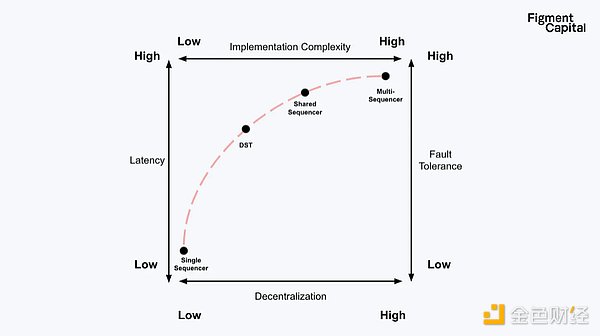
4.2Lower Cost—Data Availability and Interactive Proof Systems
Optimistic rollup requires storing transactions to reconstruct the state of the challenge process. This can lead to high data storage costs, which constitutes most of the operating costs of optimistic rollup. However, people are actively researching this issue, and solutions include applying more compression techniques or using alt DA (alternative data availability). In addition, interactive proof systems help reduce challenge costs because the computational effort of challenges is greatly reduced.
4.2.1 Solution 1: Low-Cost DA
Optimistic rollup is effectively leveraging Ethereum blobs and other data availability (DA) solutions such as Celestia to solve the high cost issues associated with the publication of transaction package data.
In the case of Ethereum, optimistic rollup previously published transaction data as calldata to the mainnet, which was a huge cost. However, with the Dencun upgrade, they now use a new data storage format called blobs, reducing the total cost by more than 90%.
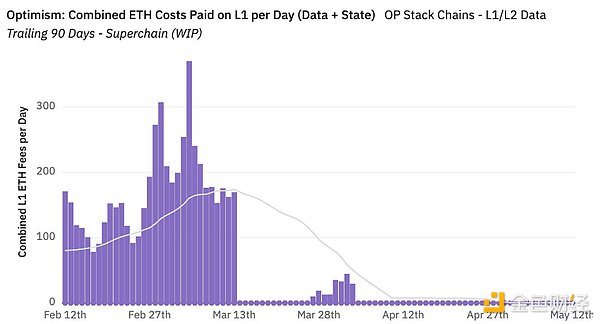
In addition to leveraging Ethereum's own advances, optimistic rollup is also integrating with other data availability solutions such as Avail and Celestia. By offloading transaction package data to Celestia, optimistic rollup can reduce its reliance on Ethereum's more expensive storage, further reducing the costs associated with data publishing. This integration allows rollups to maintain high levels of throughput and transaction speed while keeping costs manageable.
The alt DA space is now gaining more and more attention as more rollups are launched using optimistic proof systems. As more rollups prepare to be launched, the alt DA space will also see significant strengthening. Currently, DA is neither a bottleneck in terms of operating costs nor a bottleneck in terms of scalability.
4.2.2 Solution 2: Interactive Proof System
In optimistic rollup, if a transaction is suspected to be fraudulent, challengers on the network can challenge the validity of the output root. During the challenge period, a fraud proof must be provided to prove the incorrectness of the transaction. If the transaction is proven to be fraudulent, the proof is verified on-chain, resulting in the transaction being invalid. This approach ensures that only disputed transactions require on-chain verification, allowing most transactions to remain off-chain.
The interactive proof system invites participants to generate and submit fraud proofs when they suspect a transaction is fraudulent. The smart contract that manages the rollup evaluates these proofs against the state root submitted by the sorter. If a deviation is found, the incorrect state is discarded and the system is restored to the previous valid state. This approach ensures efficient verification without placing unnecessary computational burden on the Ethereum network. Currently, such computations are performed on-chain, which can be very expensive. For Arbitrum, the computations required for challenges are done off-chain and the final results are published on-chain. But the cost is likely to be minimal because there are almost no challenges in the current optimistic rollup.
4.3 Slow Finality—Faster Execution and Hybrid Proof Systems
Optimistic rollup has two types of finality - soft finality and fast finality. Soft finality refers to the initial state when the sorter performs state transitions and publishes batches of transactions on Ethereum. At this point, the transaction is considered "soft finality" and users and applications on the rollup can safely rely on this transaction. However, there is a challenge period (usually around 7 days) during which anyone can submit a "fraud proof" to question the validity of the batch of transactions. If no fraud proof is submitted during the challenge period, the transaction package will achieve hard finality and cannot be rolled back or challenged. Typically, native bridges require hard finality to transfer assets.
Slow soft finality and hard finality can both cause problems when building bridges or multi-chain dapps. This problem is being addressed through faster execution and hybrid proof systems.
4.3.1 Solution 1: Faster Execution
In terms of soft finality, the process involves executing state transitions and storing transaction packages in Ethereum. The execution process is limited because the EVM specification does not support parallel execution and database optimization. However, projects like MegaETH and Heiko are building parallel execution environments that use optimistic proof systems.
In addition, rollups are trying to store transaction packages faster through shorter block times. For Arbitrum, by generating a block every 250 milliseconds, or every 100 milliseconds on the configurable Orbit chain, Arbitrum ensures fast transaction confirmation. In addition, Arbitrum's design utilizes a unique "ordering" model rather than the traditional "block building" method. This unique ordering model enables faster processing by eliminating the need for transactions to wait in the memory pool. It also removes bad MEVs.
4.3.2 Solution 2: Hybrid Proof Systems
Hybrid proof systems, especially those that combine ZK proofs with optimistic rollups, significantly improve the finality of blockchain transactions by reducing the time required for conclusion verification. Optimistic rollups (such as those used in Optimism’s OP Stack) inherently rely on the assumption that transactions are valid unless challenged. This necessitates a dispute or challenge window, which allows potentially invalid transactions to be disputed. However, this challenge period can cause delays in transaction finality, as the challenge period must be long enough to ensure reliable verification and support for any potential challenges. Zeth is a ZK block prover built on the RISC Zero zkVM that enables instant validity checks on transactions by providing cryptographic evidence that a block of transactions is correct without revealing any detailed information about the transactions themselves. This reduces the reliance on long dispute windows required for optimistic rollups and significantly reduces finality time. Tools like Zeth ensure that transaction ordering and data availability mechanisms are reliably maintained, and improve the efficiency of L2 solutions like Optimism by reducing challenge periods from potentially days to hours or even minutes. Projects like ZKM have also developed hybrid proof systems for Metis.
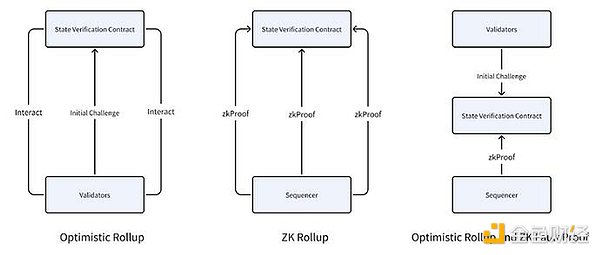
5Looking to the Future—Will Optimistic RollupBe Replaced?
In my opinion, Optimistic Rollup will not be replaced anytime soon. There are many improvements underway, and it may also be adopted by other ecosystems for its simplicity. In future posts, I will try to delve deeper into the “State of ZK Proof Systems,” discuss its recent developments and upcoming releases, and compare it with optimistic rollup. However, the adoption of frameworks like Arbitrum Orbit and OP-Stack is accelerating, and I expect better infrastructure and tooling in each ecosystem, with better coordination between them.
One issue I see in the rollup space is the issue of scalability. L1 projects like Sei, Sui, and Solana are developing infrastructure to enable reliable parallel transaction execution and database optimizations, aiming to make blockchain more accessible to the masses. Current rollups may not be able to handle as much transaction volume as Sui and achieve fast finality. However, with projects like Fuel Network, MegaETH, and Heiko making parallel execution possible, we can expect to see performance improvements in the rollup space soon.
 JinseFinance
JinseFinance























